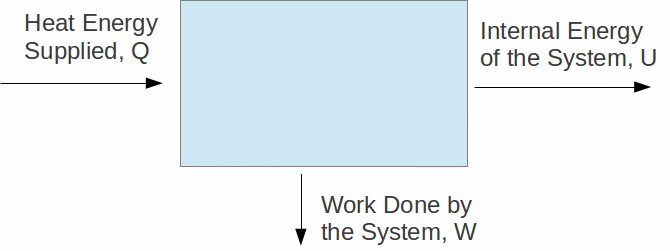The First Law of Thermodynamics is a version of the Law of Conservation of energy. If heat is supplied to a body, that heat can be used by the body to do work on its surroundings or to increase the internal energy of the body. We may write
Q=U+W
where Q=heat supplied to body, U=increase in internal energy of the body, indicated by a rise in temperature and W=work done by body on its surroundings.

It is important to note that Q, U and W can all be either positive or negative. If Q is the heat inflow to a body, U is the increase in internal energy and W is the work done by a body on its surroundings the all are positive. The the direction of any are reversed then the sign changes. The word 'body' too is used hear in a technical sense as any system subject to a heat inflow.
Suppose that you supply heat energy to a turbine in a power station. This means heating water to turn it to steam. The steam will flow through the turbine causing it to rotate. Since the steam is hot, the temperature of the turbine will increase. We can increase the efficiency of the turbine by maximising the fraction of energy casing the turbine to rotate. Heat energy is effectively wasted energy, since what we want out of a turbine is electricity. If more of the energy of the steam is used to heat the turbine, less is used to generate electricity. We can make the turbine more efficient by reducing friction, since friction generates heat, so reducing friction means less heat is generated by this means. We can reduce the heat capacity of the turbine as much as possible, since less heat energy will be stored by the turbine.
